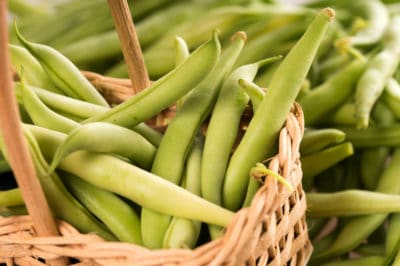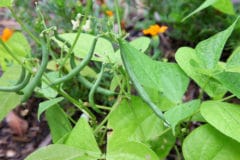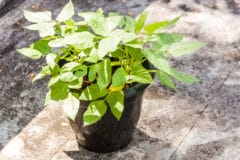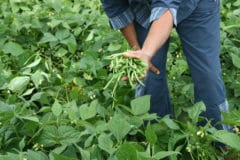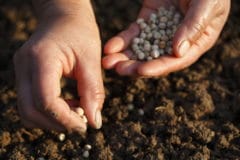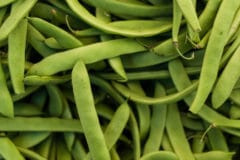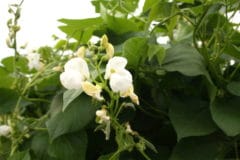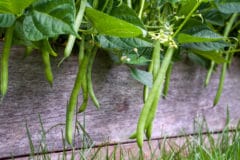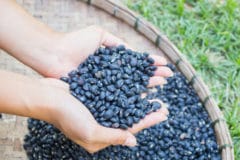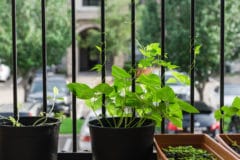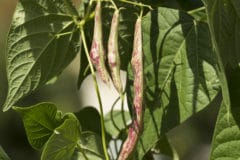Prep Work
Your bean harvest will be affected by soil, water and growing conditions. Make sure your soil is friable and fertile, but not high in nitrogen. Excess nitrogen simply means lots of leaves instead of beans. Keep your beans well-watered but don’t let them get waterlogged, as it encourages rot. Warm season plants, beans need full sun and should not be planted too early.
Green Bean Varieties
Red, yellow, purple, streaked and green – you have all kinds of choices. Except for the yellow beans, however, colored beans turn green when cooked. Here are some possibilities:
- Fortex – pole bean, very productive.
- Rattlesnake – pole bean for hot climates.
- Blue Lake – bush or pole, does well in marine areas.
- Kentucky Wonder – bush or pole, old variety but still popular.
- Romano – bush or pole, Italian flat bean.
Other Beans Used Green
In addition to the standard green (also called snap or string) beans, other varieties are used in the immature state. These include runner beans and yard long or asparagus beans. The latter are actually more closely related to the cowpea but used like green beans. Runner beans produce large pods with strings as well as brilliantly showy flowers.
Gauging Maturity
As any experienced gardener knows, maturity dates are an estimate and depend on factors such as climate and growing conditions. However, they do provide a gauge as to when you can expect to start harvesting beans. Maturity dates for green beans vary from around 50 to 90 days, depending on the variety. Pole beans generally have longer maturity dates than green beans.
Choosing Ripe Beans
Bean length and diameter are the two key factors in deciding when beans are ready. For most green beans, a diameter slightly larger than a pencil is about right. However, filet beans are often harvested much smaller. A length of four to seven inches will provide you with tasty beans that are not overly fibrous. However, you should experiment with each variety to find the “just right” stage.
How to Harvest
Bean plants are brittle; support the vine with one hand while picking with the other. Snap the bean from the stem by bending it sharply between thumb and forefinger. Some people prefer to use scissors. Don’t leave any of the pod on the stem end, as it will decrease flowering and pod set. Harvest frequently (at least every other day) to increase production, especially with pole beans.
